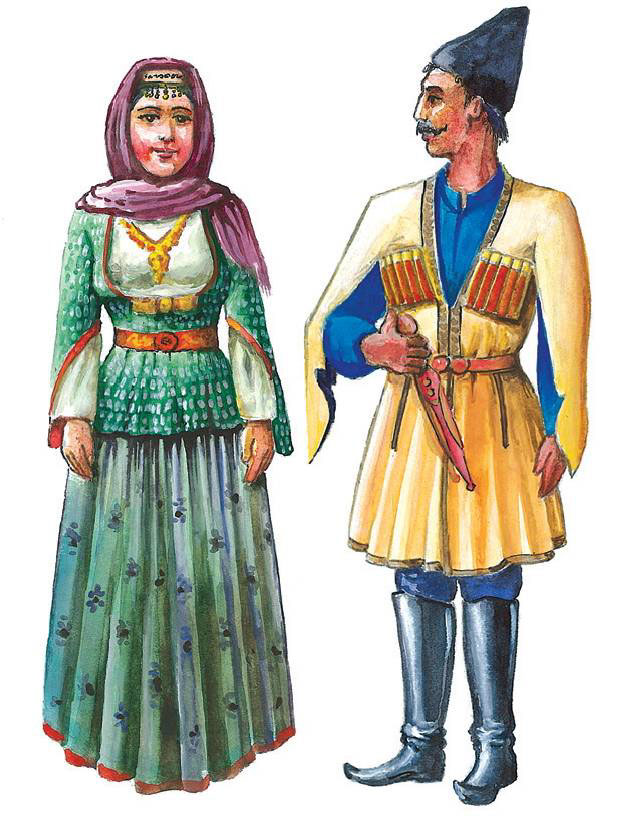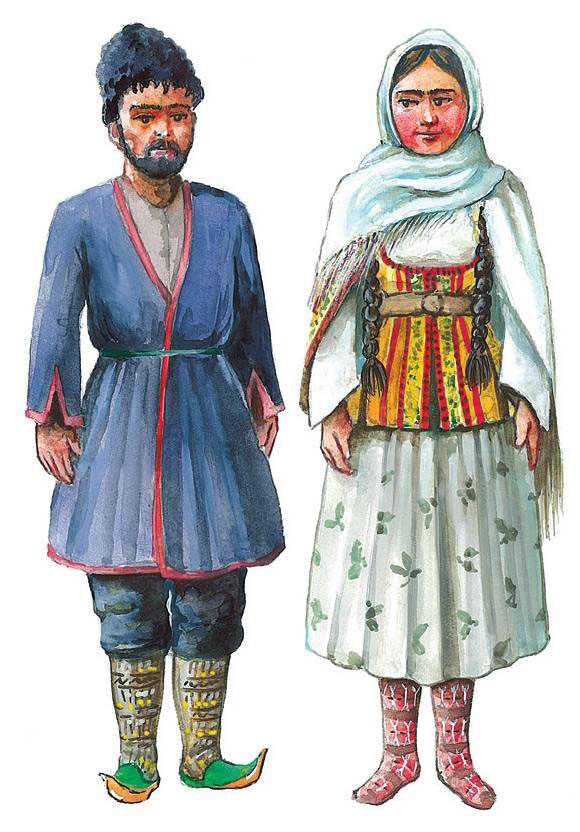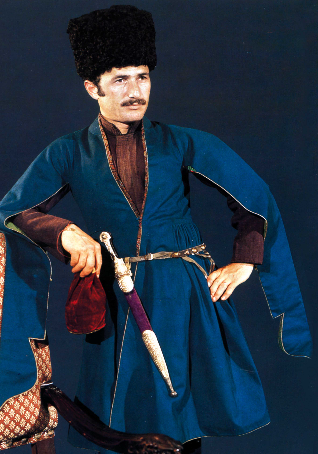History of Azerbaijan National Clothes
Azerbaijan national clothes are strongly linked with the rich history of the country and reflect the material and spiritual culture of the people. Traditions, national thinking, folk art are reflected in the variety and diversity of clothes, even in patterns and individual details. Our clothes, which have been formed over the centuries and have undergone a long process of development based on national values, are distinguished by their originality. Although these clothes have lost their relevance today, they are kept alive as a valuable treasure that embodies our history and nationality.
During archeological excavations in Azerbaijan, a bronze needle belonging to the beginning of the Bronze Age (third millennium BC) and we were found. These findings prove that the ancient inhabitants of Azerbaijan were able to sew clothes for themselves. Remains of clothes made of various silk fabrics were found in the tombs of Mingachevir catacombs belonging to V-VI centuries AD.

From the 17th century, Azerbaijan was famous for its silkworm breeding and weaving. Azerbaijan was known as the largest silk-growing country in the East, and Shirvan province was the largest silk-growing region in Azerbaijan. In addition, silk production was highly developed in Shamakhi, Basgal, Ganja, Sheki, and Shusha regions of Azerbaijan. In these regions, very elegant, ornate, patterned, elegant women’s headdresses were produced from silk.
Among the fabrics produced in Azerbaijan and widely exported and exported to other places are zarbafta, khara, satin, taffeta, ganovuz, velvet, daray, mahud, shawl, tirma, midgal, bez and others. it should be noted. Some of these passages include “Haji, look at me”, “day and night”, “stay in the gene”, “I’m used to it”, “the street is too narrow for me” and so on. was popular under the names. While women’s clothing was mainly made of silk and velvet, men’s clothing was mostly made of mahud and shawl woven at home.
In the 16th and 17th centuries, Azerbaijani costumes developed richly, and a national costume school was established. It was possible to know a person’s age, profession, and even class by clothing. The form of the dress also reflected the marital status of its owner. The dress of single girls was different from that of married women. Young girls wore brighter and more stylish.
At that time, the traditional outerwear – aba – was very popular in Azerbaijan. Unlike the abaas of the previous period, they sat tightly on the body, and the arms were relatively narrow.
The men wore tight-fitting trousers with narrow legs. The color of the pants was often blue or dark yellow. During this period, women also wore trousers that stretched to the heel. As with men, women’s trousers were very narrow at the ankles and wide at the top.
In the 18th century, women’s clothing consisted of a shirt, a turban, an “arkhalyk”, a “kurdu”, a “kuleja”, a “labbed”, and a spring. The color of the shirts worn by women also varied depending on their age. Girls and brides wore yellow, red, green, and older women wore white or black shirts. Girls and older women used less jewelry. Young brides wore more beautiful and rich clothes.
Men’s clothing consisted of shirts, backs, jackets, and trousers. It should be noted that this very popular set of folk costumes was typical for the whole territory of Azerbaijan, except for minor differences. In short, the clothes reflected the age, family, and social status of the wearer.

Azerbaijan National Clothes: Women & Men’s Hats
Women’s hats were distinguished by their color, beauty, and variety. There are silk scarves, turbans, “naz-nazi”, “tasek”, “petals”, “veils”, and so on. was included.
The main clothing worn by men was hats made of sheepskin. Among Azerbaijanis, the hat was considered a symbol of courage, dignity, and honor. Losing him was considered a great disgrace. The theft of someone’s hat was considered an enemy attack on its owner. To knock a man’s hat off was to insult him and all his descendants. The shape of the hat could determine the social status of its owner. Men did not take off their hats in any case (even while eating), except during ablution before prayer. It was considered a disgrace to appear in public without a hat.



